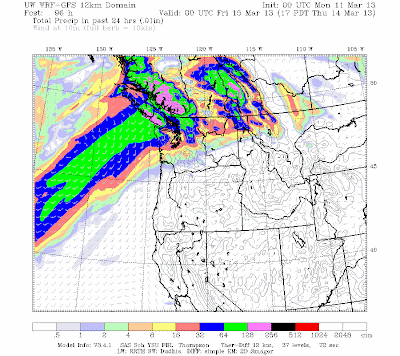
“Develop an interest in life as you see it; the people, things, literature, music - the world is so rich, simply throbbing with rich treasures, beautiful souls and interesting people. Forget yourself.”
Henry Miller, 1950.

“Develop an interest in life as you see it; the people, things, literature, music - the world is so rich, simply throbbing with rich treasures, beautiful souls and interesting people. Forget yourself.”
Henry Miller, 1950.

“Boston, as the Eagle and the Wild Goose See It” by James Wallace Black. Photo: James Wallace Black / The Met
Sam.urmygiant isopod = footlong potato bug of the deep sea, and apparently they're really graceful swimmers!
You know the good stuff is going to keep rolling in from my research cruise to Mid-Cayman Spreading Center. At the end of JC82, we had the opportunity to join a bolt-on cruise to explore the seabed around Montserrat. During a biological survey of the surrounding abyssal plain, we twice stumbled on a giant deep-sea [...]
Building the World’s Largest Ship in 50,000 Pics
This timelapse, produced by Discovery Channel and Maersk Line, shows the construction of Maersk Line’s first Triple-E container ship at the DSME shipyard in Okpo, Korea.
The timelapse was made using 50,000 photos taken over a 3 months period.

Centuries Ago, a Cat Walked Across This Medieval Manuscript
While pawing through a stack of medieval manuscripts from Dubrovnik, Croatia, University of Sarajevo doctoral student Emir O. Filipović stumbled upon a familiar set of splotches marring the centuries-old pages. Years ago, a mischievous kitty had left her ink-covered prints on the book…
Sam.urmyClick through and read this.
We interrupt our regularly scheduled marine science and conservation discussions and frequent Aquaman adulation to bring you this important announcement:
“My legs creak as I climb the stairs to our meeting room. I lean against the wall to steady myself. I could have taken the elevator, saved myself the pain, but I need to heal. [...]
"I'm 57 seconds in and already more emotionally invested in that damn seal getting on the board than I am in many a main movie character surviving a shoot-out."
Sam.urmy"Poseidon's humid, warm finger will be touching us for days!...But Poseidon is not finished with us!...his briny, wet finger strengthens and drifts down across Washington (see graphic)....And the final 24-h period...shows Poseidon's watery revenge moving a bit northward."
Uhhhh...what are you trying to tell us here Cliff Mass
 Be advised. Poseidon is approaching!
Be advised. Poseidon is approaching! 
 But Poseidon is not finished with us! The next 24-h (ending 4 PM on Wednesday) enhances the terrible wrath, as his briny, wet finger strengthens and drifts down across Washington (see graphic). The western side of the Olympics will be particularly hard hit, as will the central Cascades.
But Poseidon is not finished with us! The next 24-h (ending 4 PM on Wednesday) enhances the terrible wrath, as his briny, wet finger strengthens and drifts down across Washington (see graphic). The western side of the Olympics will be particularly hard hit, as will the central Cascades.
 To get the whole wet picture, here is the 72hr precipitation total ending 4 PM on Thursday. 5-10 inches over the Olympics, north Cascades, and mountains of southern B.C. Enough to bring some rivers to near bankfull. (The National Weather Service has a hydrological outlook that notes the potential threat). The interesting thing is that from Portland southward it will be dry...and quite warm. This time the Willamette will be favored by the trident-clad one.
To get the whole wet picture, here is the 72hr precipitation total ending 4 PM on Thursday. 5-10 inches over the Olympics, north Cascades, and mountains of southern B.C. Enough to bring some rivers to near bankfull. (The National Weather Service has a hydrological outlook that notes the potential threat). The interesting thing is that from Portland southward it will be dry...and quite warm. This time the Willamette will be favored by the trident-clad one.  But Poseidon's influence will go beyond rivers and streams, it will bring a current of very warm air at low levels, causing the freezing and snow levels to rise above the Cascade crests....here is the 850 hPa (around 5000ft) temperature and wind map for Wednesday night...warm air and strong southwesterly winds will extend over the region. Great sadness will spread across the skiing community.
But Poseidon's influence will go beyond rivers and streams, it will bring a current of very warm air at low levels, causing the freezing and snow levels to rise above the Cascade crests....here is the 850 hPa (around 5000ft) temperature and wind map for Wednesday night...warm air and strong southwesterly winds will extend over the region. Great sadness will spread across the skiing community.  For the middle of March, this will be a notable event, worthy of a proper name. Too far away for the Weather Channel's attention or even a visit by Jim Cantore. But we will honor it, in our fashion.
For the middle of March, this will be a notable event, worthy of a proper name. Too far away for the Weather Channel's attention or even a visit by Jim Cantore. But we will honor it, in our fashion.Sam.urmyThis is a goddamn amazing video

Georgia O’ Keeffe, 1956.
photo by Yousuf Karsh
Sam.urmyAMERICA
AMERICA
YOU ARE SO GRAND AND GO-O-OLDEN

Paul Newman, 1963.
Sam.urmyreally like the comparison of northeastern winter weather to a slurpee
| Image from the video at 1:12 PM Feb. 12 |
Sam.urmygaaahhhh
As was the case in every Levittown, by Levitt's orders, not a single resident was black. It was not for a shortage of potential black buyers. Black housing demand far exceeded supply. In metropolitan Philadelphia, between 1946 and 1953, only 347 of 120,000 new homes built were open to blacks. Racial exclusion had perverse economic effects: It created a vast gap between supply and demand. As a result, blacks paid more for housing on average than did whites. In nearly every northern city, black newcomers crammed into old and run-down housing, mainly in dense central neighborhoods left behind by upwardly mobile whites.This is really sinister. In rhetoric, at the time, America claimed "separate but equal." In effect, what you see is something more like "separate and serfdom." The policy was to keep black people from moving out of ghettos, and to keep them from marketing their labor in competition with whites, unless absolutely necessary. It is not enough to merely understand segregation as a means to keep the "races" separate. Segregation is about rendering black people a permanent underclass. This is not about an amorphous diversity. This is about power.
No man who owns his own house and lot can be a Communist. He has too much to do.When a nation excludes a people from the process of patriotism, what is it saying to them?
 |
 |
Sam.urmyw00t! first post in two months!
| High-resolution satellite image showing the drill rig Kulluk aground off the coast of Alaska on January 4, 2013. Image courtesy DigitalGlobe. Subscribe to their WorldView report to see more great images. |
 |
| The tugboat M/V Aiviq towing Shell's Kulluk drill rig in better times. Photo courtesy gCaptain. |